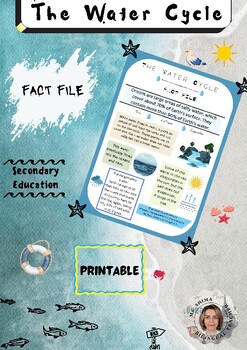The Water Cycle Science Resource | Fact File & Diagrams
- PDF
Description
Help students understand the water cycle with this informative 2-page science resource! Includes a visually appealing fact file page detailing how water moves between oceans, rivers, rain, and evaporation. Plus a labeled diagram showing each step of the water cycle.
Great for introducing or reviewing the basics of Earth's water cycle. This printable handout defines key vocabulary like evaporation, condensation, precipitation, collection, and more using kid-friendly language. The colorful diagram reinforces concepts for visual learners.
Use this water cycle resource to:
- Teach about the different states of water
- Explain what happens during evaporation, condensation, and precipitation
- Show how water moves in a continuous cycle around Earth
- Review environmental science and geology concepts
- Assess student knowledge with a matching or fill-in-the-blank activity
This engaging informational text and diagram are ideal for:
- 3rd-5th grade science lessons and stations
- Earth science and geology units
- Test prep on cycles and systems
- Environmental science projects
- Interactive notebooks and workbooks
File comes as a high-quality PDF for easy printing or sending digitally to students. Images and text are included for classroom display.





